Aseptic Catheter Insertion Practices in the ED: A Focus on Engagement
Slide Presentation
Slide 1
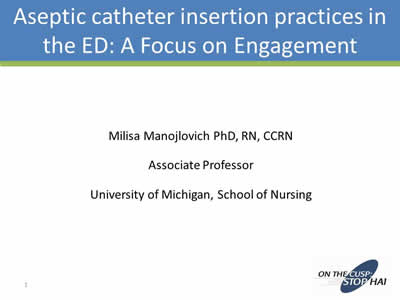
Aseptic Catheter Insertion Practices in the ED: A Focus on Engagement
Milisa Manojlovich PhD, RN, CCRN
Associate Professor
University of Michigan, School of Nursing
Slide 2
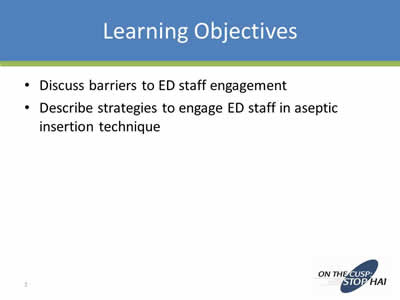
Learning Objectives
- Discuss barriers to ED staff engagement
- Describe strategies to engage ED staff in aseptic insertion technique
Slide 3
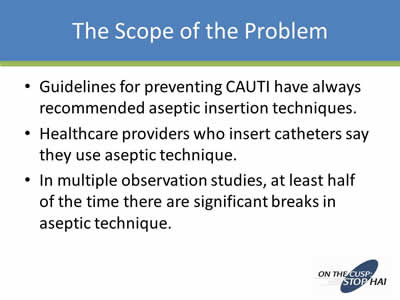
The Scope of the Problem
- Guidelines for preventing CAUTI have always recommended aseptic insertion techniques.
- Healthcare providers who insert catheters say they use aseptic technique.
- In multiple observation studies, at least half of the time there are significant breaks in aseptic technique.
Slide 4
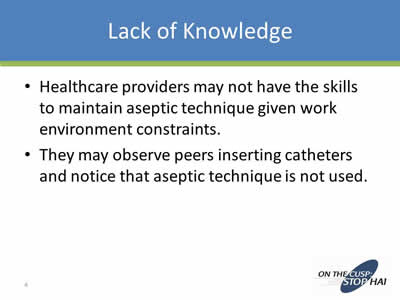
Lack of Knowledge
- Healthcare providers may not have the skills to maintain aseptic technique given work environment constraints.
- They may observe peers inserting catheters and notice that aseptic technique is not used.
Slide 5
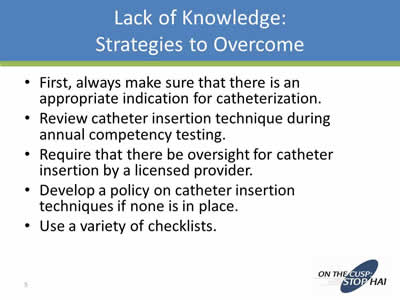
Lack of Knowledge: Strategies to Overcome
- First, always make sure that there is an appropriate indication for catheterization.
- Review catheter insertion technique during annual competency testing.
- Require that there be oversight for catheter insertion by a licensed provider.
- Develop a policy on catheter insertion techniques if none is in place.
- Use a variety of checklists.
Slide 6
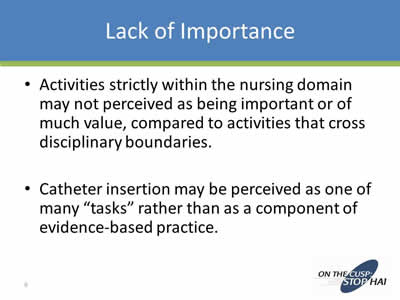
Lack of Importance
- Activities strictly within the nursing domain may not perceived as being important or of much value, compared to activities that cross disciplinary boundaries.
- Catheter insertion may be perceived as one of many “tasks” rather than as a component of evidence-based practice.
Slide 7
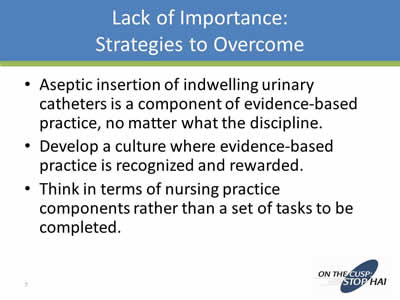
Lack of Importance: Strategies to Overcome
- Aseptic insertion of indwelling urinary catheters is a component of evidence-based practice, no matter what the discipline.
- Develop a culture where evidence-based practice is recognized and rewarded.
- Think in terms of nursing practice components rather than a set of tasks to be completed.
Slide 8
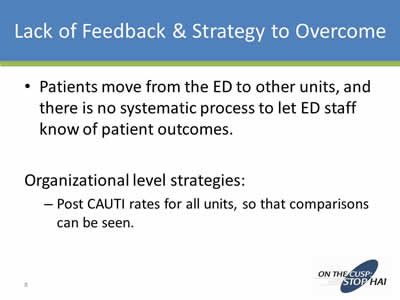
Lack of Feedback & Strategy to Overcome
- Patients move from the ED to other units, and there is no systematic process to let ED staff know of patient outcomes.
Organizational level strategies:
- Post CAUTI rates for all units, so that comparisons can be seen.
Slide 9
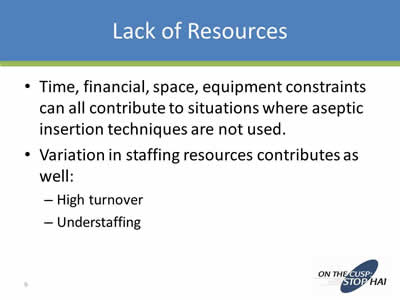
Lack of Resources
- Time, financial, space, equipment constraints can all contribute to situations where aseptic insertion techniques are not used.
- Variation in staffing resources contributes as well:
- High turnover
- Understaffing
Slide 10
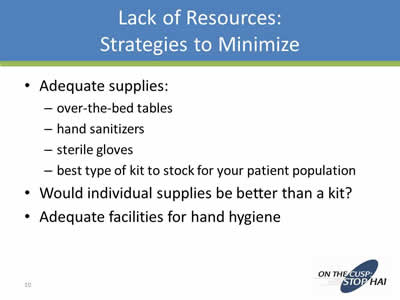
Lack of Resources: Strategies to Minimize
- Adequate supplies:
- Over-the-bed tables
- Hand sanitizers
- Sterile gloves
- Best type of kit to stock for your patient population
- Would individual supplies be better than a kit?
- Adequate facilities for hand hygiene
Slide 11
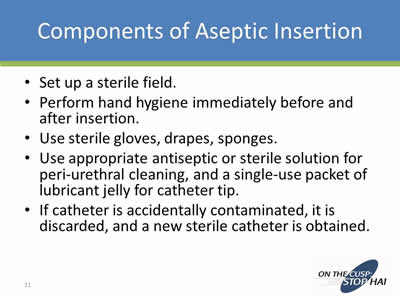
Components of Aseptic Insertion
- Set up a sterile field.
- Perform hand hygiene immediately before and after insertion.
- Use sterile gloves, drapes, sponges.
- Use appropriate antiseptic or sterile solution for peri-urethral cleaning, and a single-use packet of lubricant jelly for catheter tip.
- If catheter is accidentally contaminated, it is discarded, and a new sterile catheter is obtained.
Slide 12
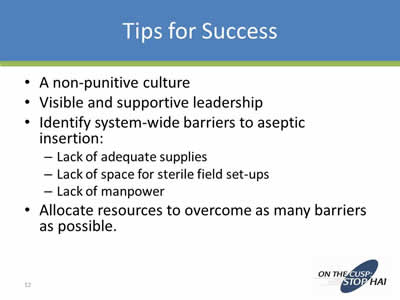
Tips for Success
- A non-punitive culture
- Visible and supportive leadership
- Identify system-wide barriers to aseptic insertion:
- Lack of adequate supplies
- Lack of space for sterile field set-ups
- Lack of manpower
- Allocate resources to overcome as many barriers as possible.
Slide 13

More Tips for Success!
- Transition to an evidence-based practice approach for patient care delivery:
- Several evidence-based practice models are available to choose from;
- They all provide guidelines for enlisting staff support and buy-in.
- Enable collaborative and decentralized decision-making.
- Allow nurses to make decisions that affect their practice.
Slide 14

Thank you!
Questions?
Slide 15
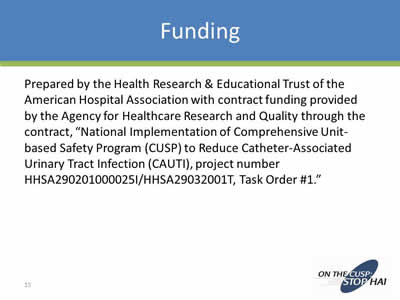
Funding
Prepared by the Health Research & Educational Trust of the American Hospital Association with contract funding provided by the Agency for Healthcare Research and Quality through the contract, “National Implementation of Comprehensive Unit-based Safety Program (CUSP) to Reduce Catheter-Associated Urinary Tract Infection (CAUTI), project number HHSA290201000025I/HHSA29032001T, Task Order #1.”
Return to CAUTI Toolkit Information for Specialty Audiences



